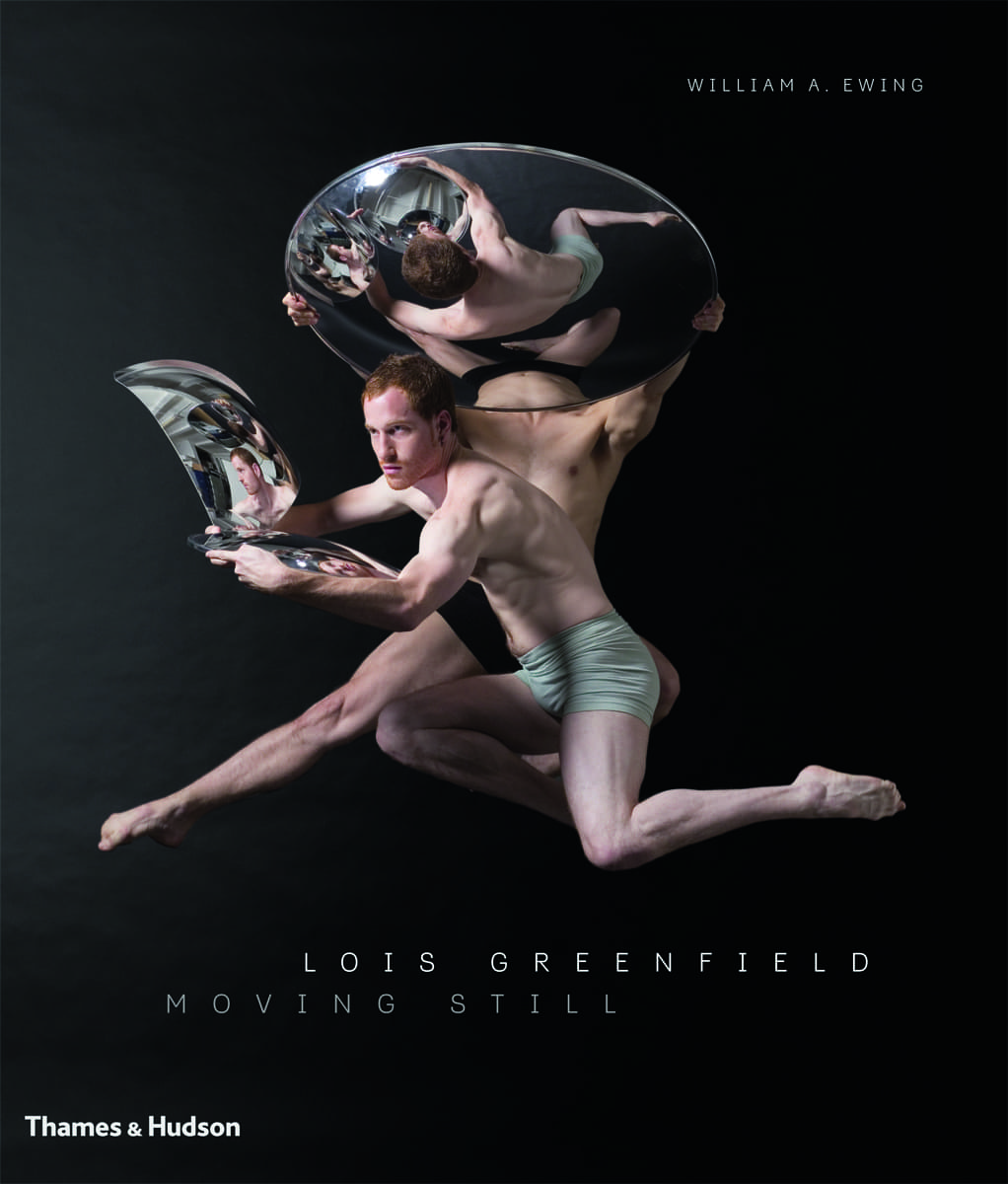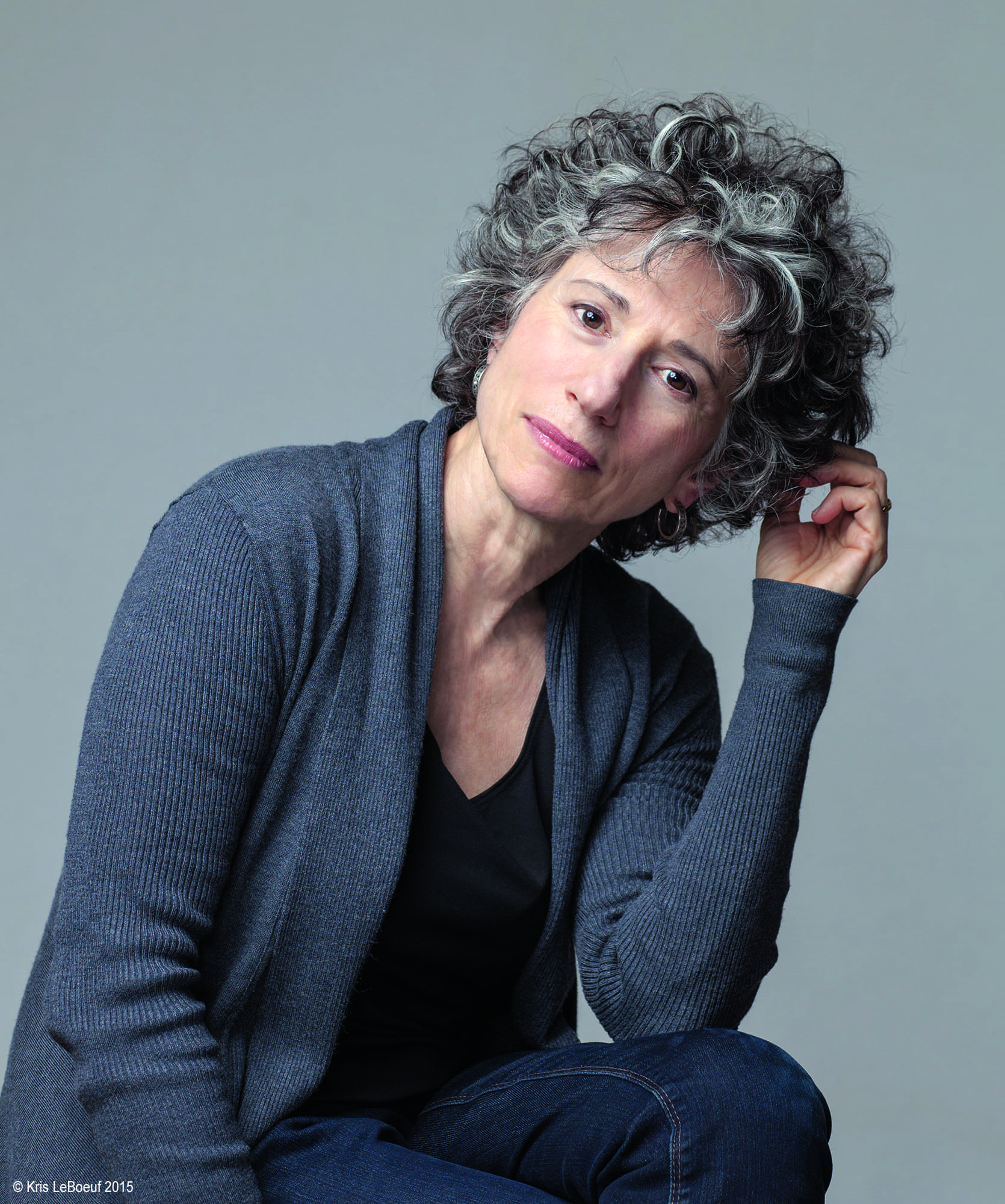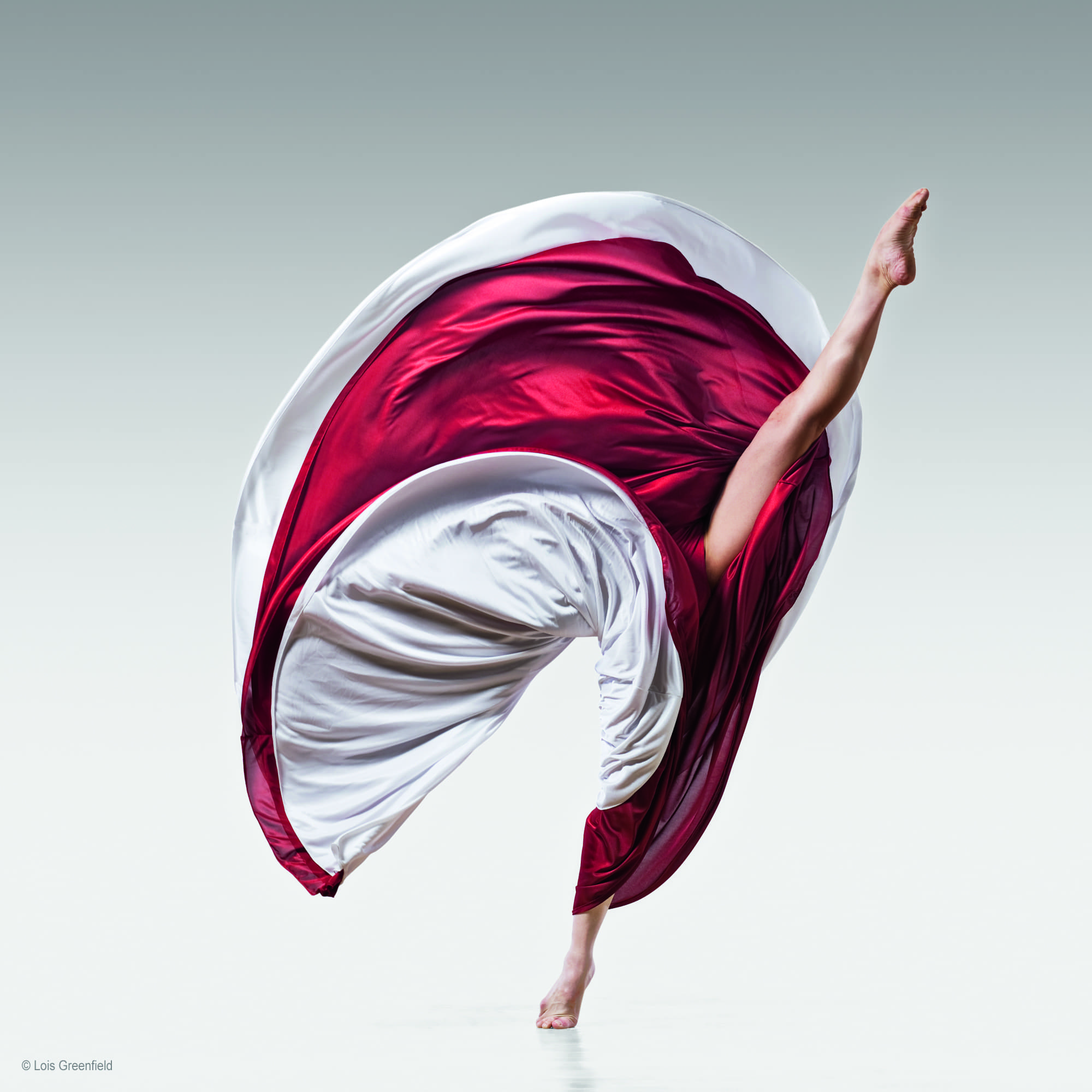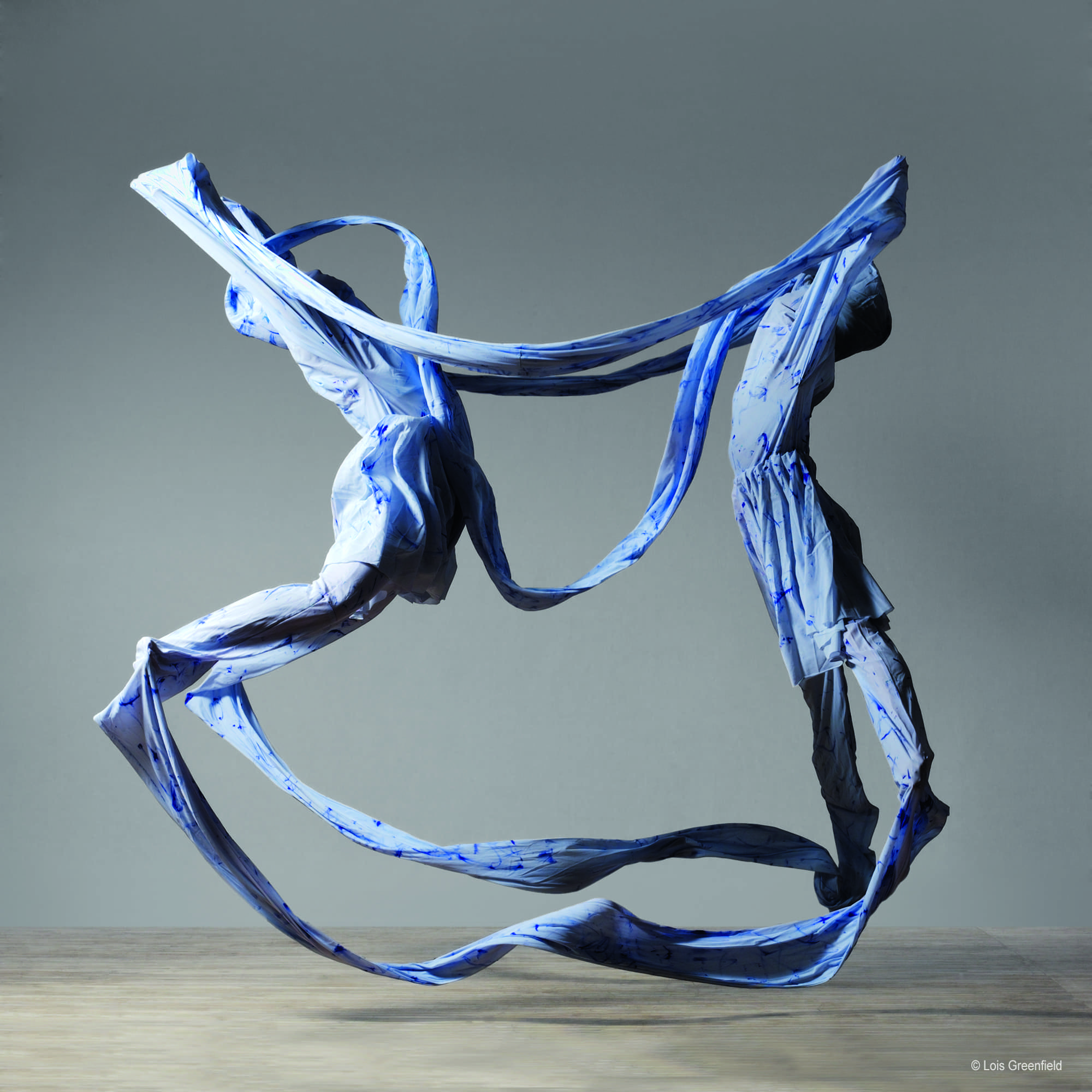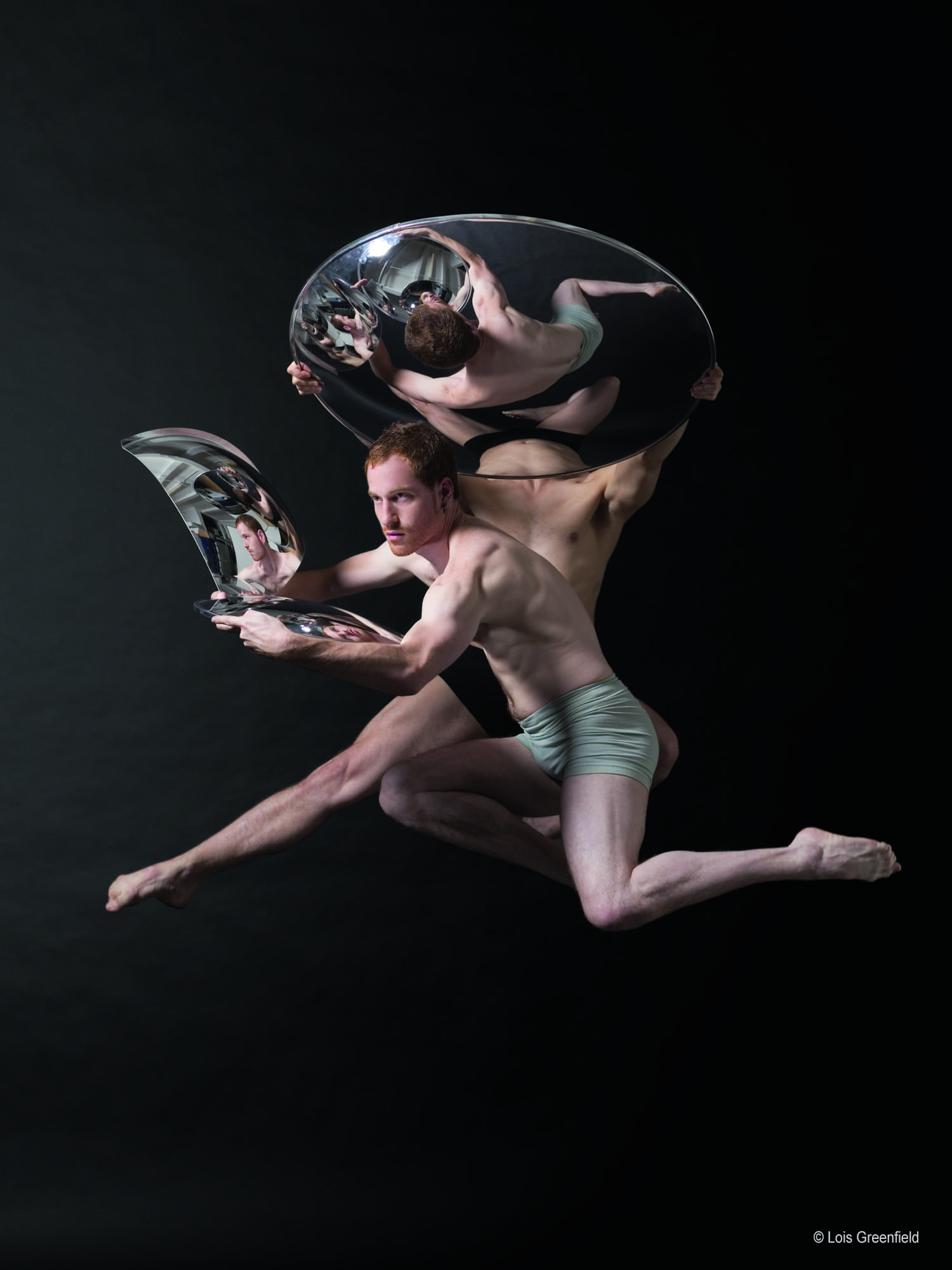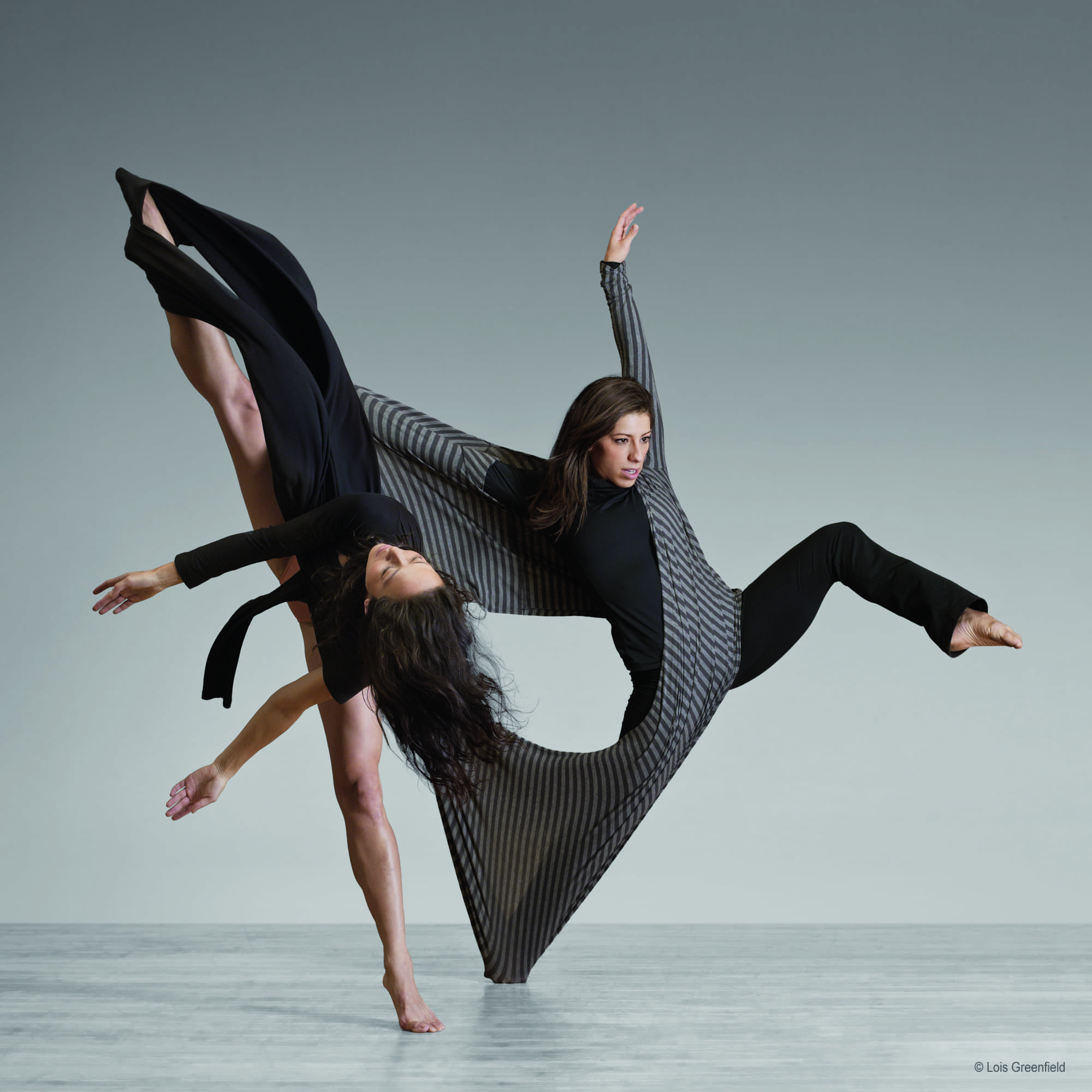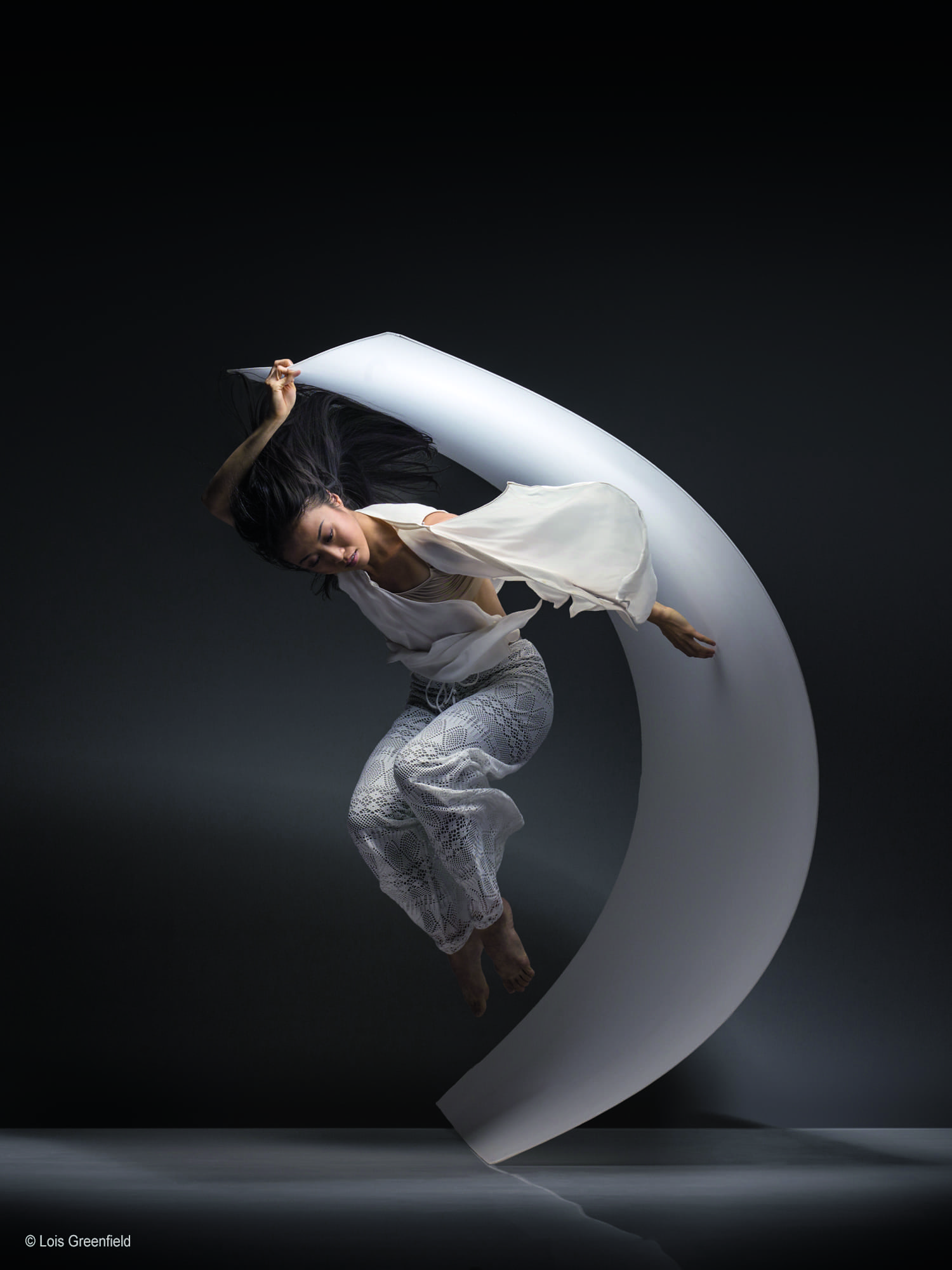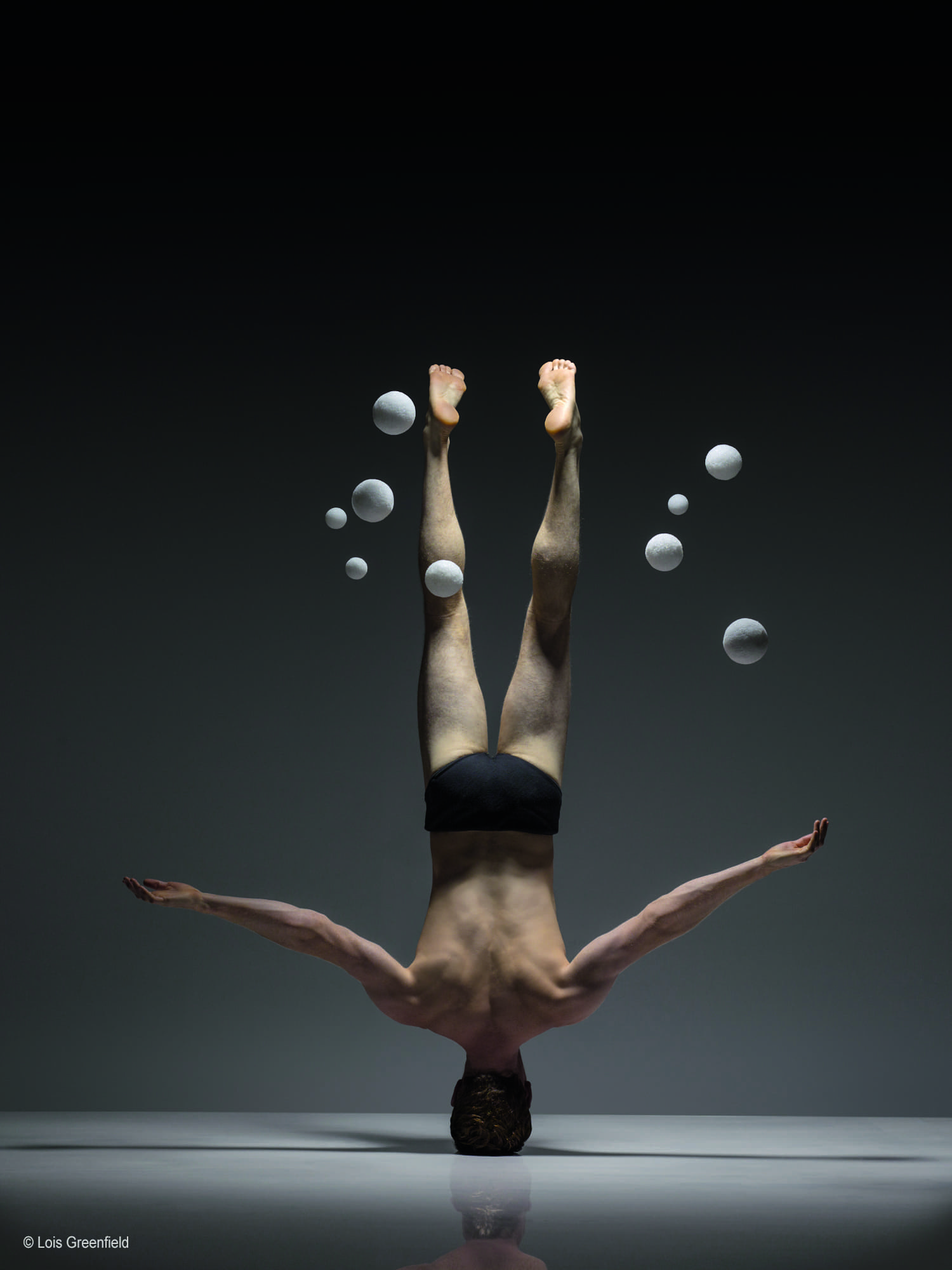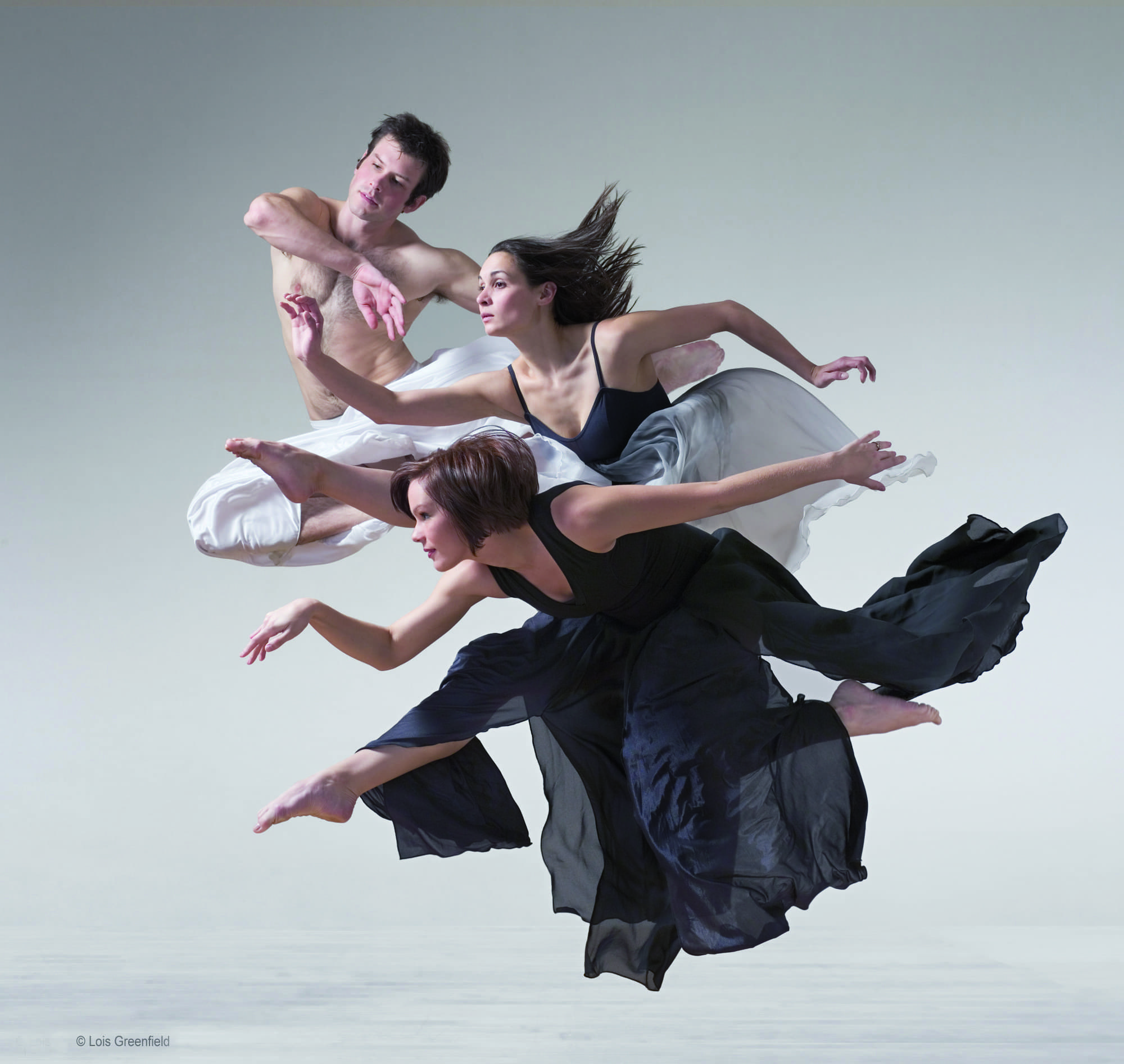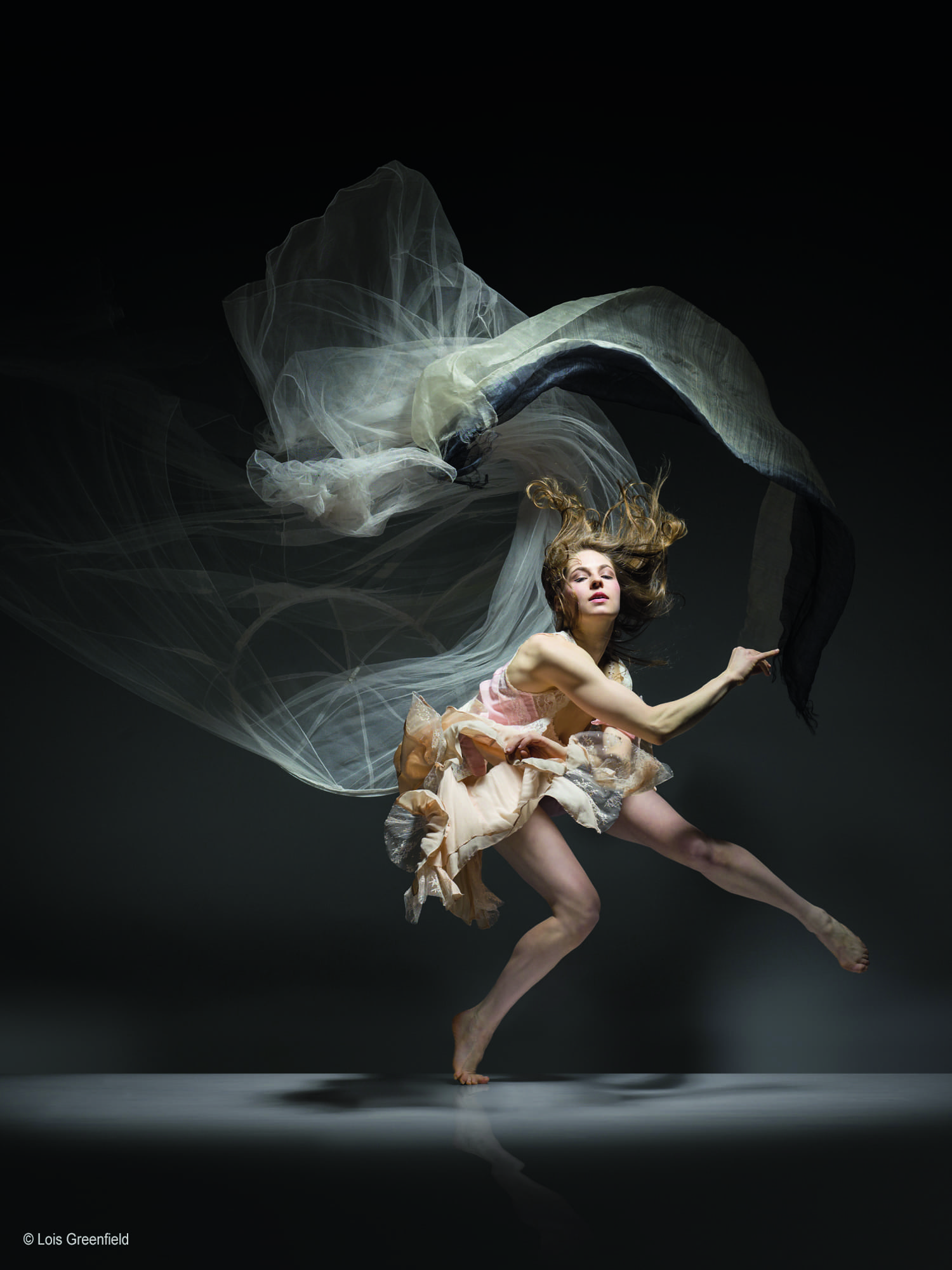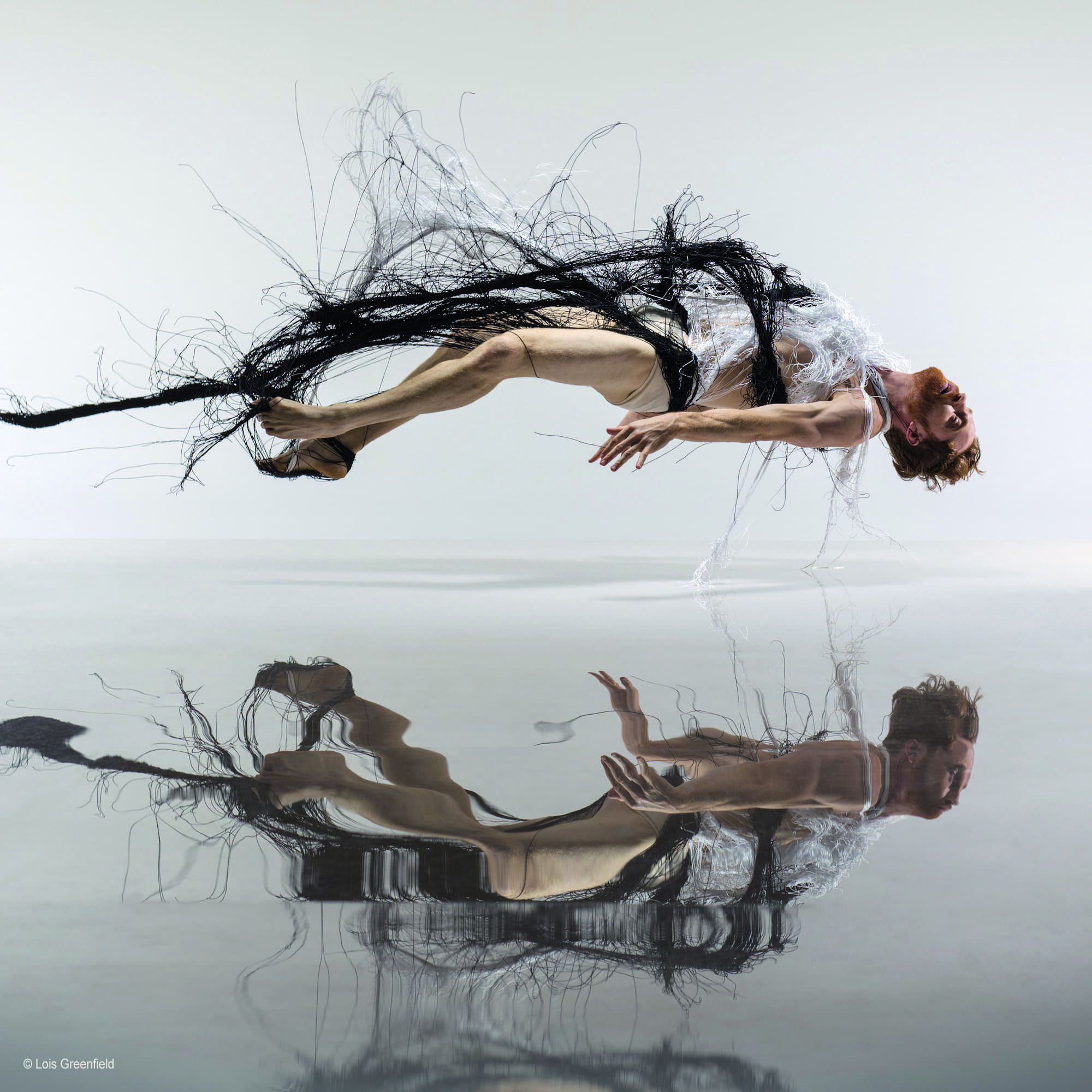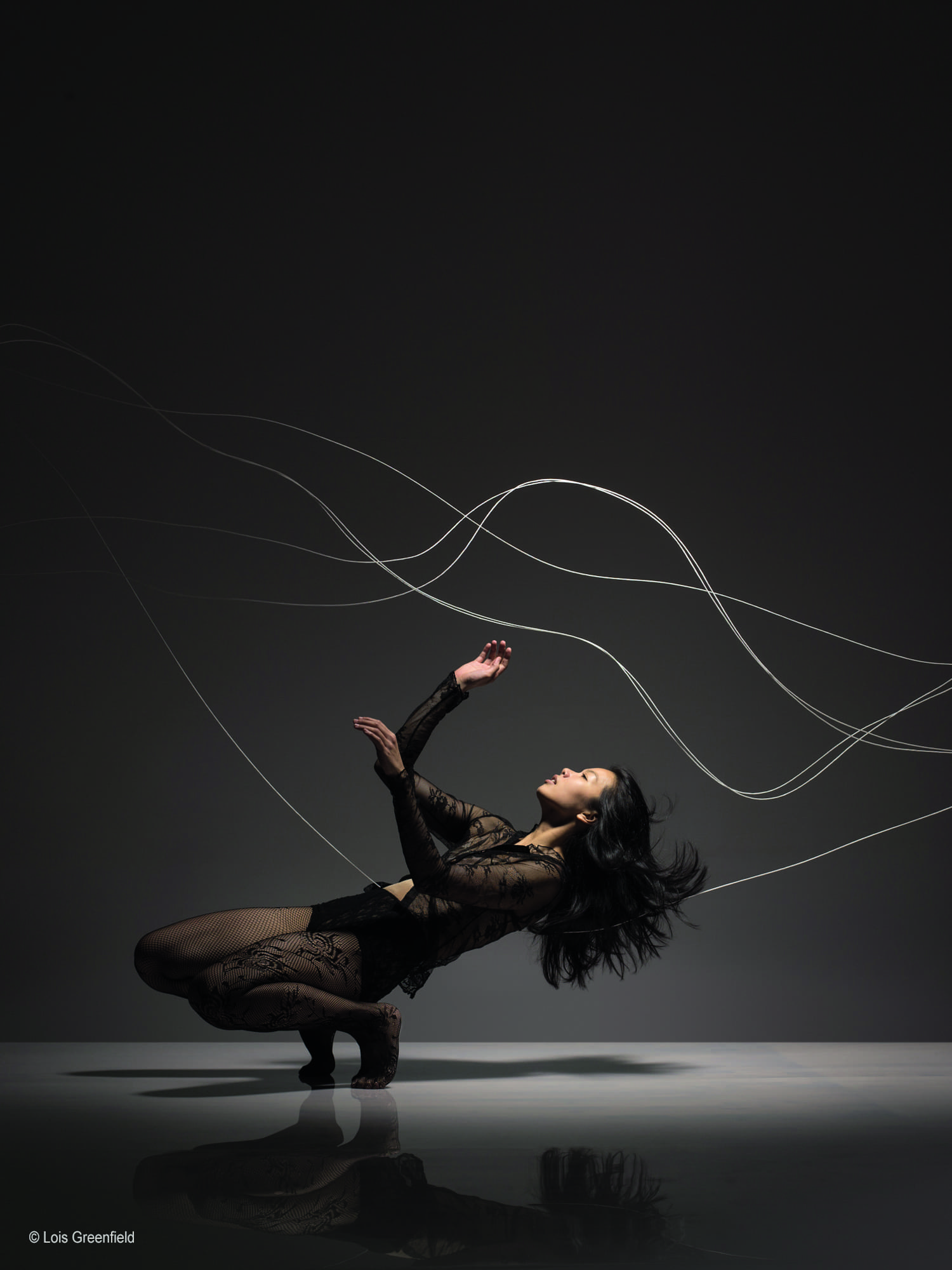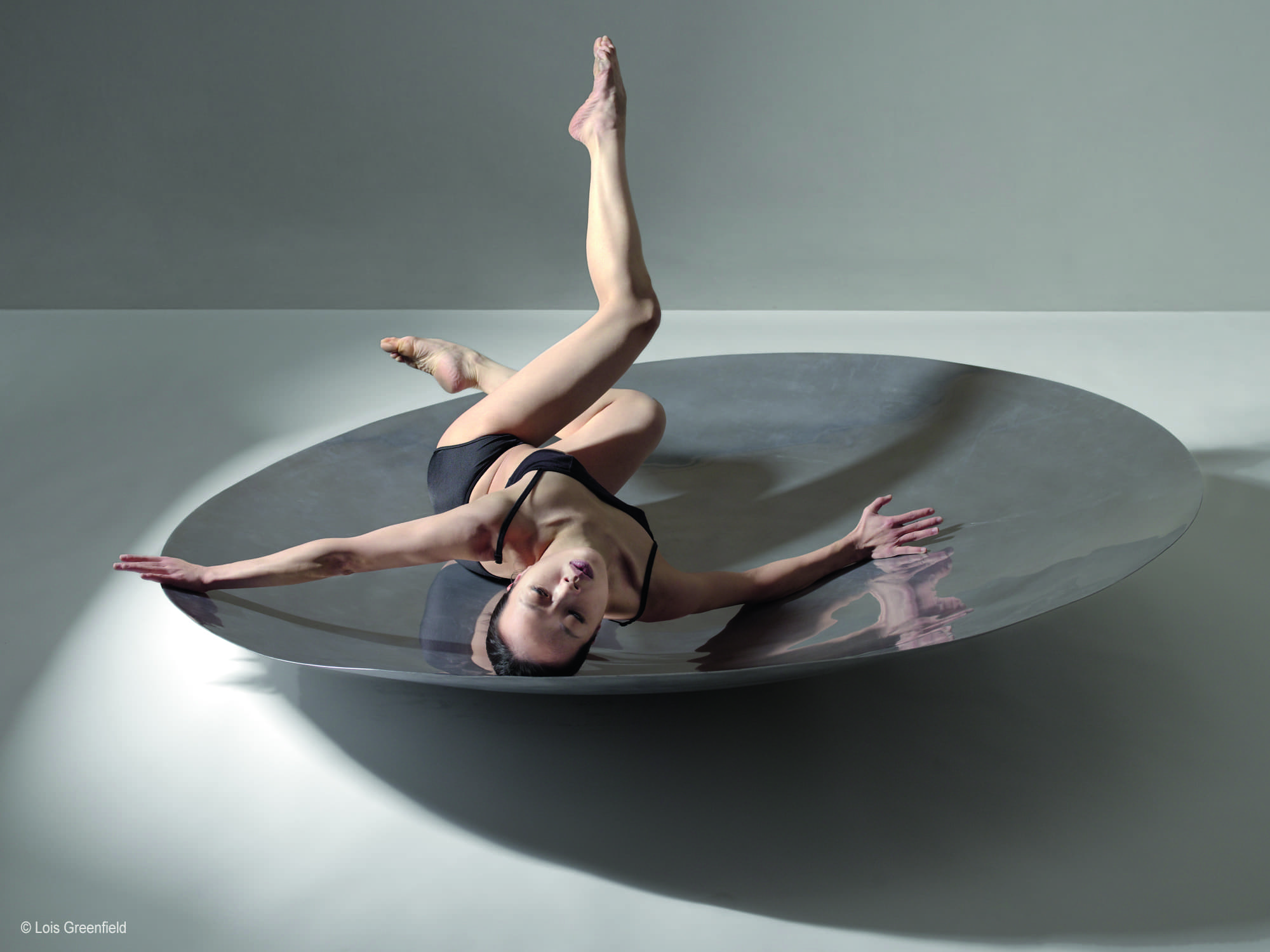Lois Greenfield has made a career photographing movement in dance. She has photographed some of the word leading dance company members to capture beautiful, impossible-seeming moments. Her ‘gravity defying’ studio images show dancers frozen in motion, often mid-air; reflected back at us through mirrors; or locked with other dancers in a puzzle of arms and legs. Her latest book, Moving Stills highlights the best of her work from the last two decades. We caught up with her, to find out more about her career and photography.
What interests you about photographing dance movements in particular?
I prefer to work outside the constraints of choreography, collaborating with dancers on improvised, non-repeatable, often high-risk moments. These moments are not plucked from a specific dance, but exist only as isolated instants created for the camera.
I am on a quest for a perfect moment, in which the conjunction of the dancer’s movement, expression, gesture and implied narrative becomes part of an enigmatic or ambiguous scenario, often involving reflective surfaces, fabrics and assorted elements that we throw into the set. The point is never to have the viewer figure out what is going on in the photo, but just to present the mystery of that instant.
Where did it all begin?
I began as a photojournalist in the 1970’s. As a newspaper photographer some of my assignments were to cover dance performances, which were in some ways proved more challenging than covering life’s dramas! I realized that one of the differences between news photography and dance photography was that the former has to tell a specific story, whereas all a dance photograph had to be was visually interesting, and with graphic appeal. I enjoyed the freedom of not having to illustrate an editorial point of view, and began to concentrate on shooting performances.
After a while however, I realized I didn’t want to document someone else’s art. I decided to merge photography and dance in order to create a hybrid of the two art forms. So I asked the dancers to come to my studio and we made images of dance that can only be seen in a photo.
Do you have any influences on your work, such as other artists or art movements that inspire you?
Photographers Duane Michals and Max Waldman were most influential to my work, and also the painters and sculptors of the Italian Renaissance, especially Michelangelo, whose imagery paired strength with grace. Biblical and mythological themes emerged in my photos from that influence as well.
What are your aims when taking your images?
I am interested in the spontaneous act of creating images without forethought. I know many artists start with an idea in mind and then they put it on paper. I don’t work that way. I may have a starting point, which is in the form of a question that begins with “What if…” or a directive-‐ “let’s try that…” Frankly if I knew what the finished picture would look like I wouldn’t bother to make the picture, as my interest in this process is to get beyond my imagination, not document an already formulated idea.
Often my shoots are blind dates, inviting a dancer I never even saw perform to come to the studio for a shoot, I see each photo session as uncharted territory, and usually have no idea as to what I want the resulting photos to look like.
What cameras and equipment do you use?
My setup is quite simple. I shoot on manual exposure with a Hasselblad 500 C/M and Leaf Aptus II 7 digital back mounted on a tripod. My settings are consistent: ISO 50, 1/250th shutter speed and, for better depth of field, an aperture between f/5.6-f/8.
I focus manually on a predetermined spot (which is marked for the dancers) and shoot only one frame at a time, usually with a 120mm CF Makro-Planar f/4 lens (approximate 35mm-equivalent of 76mm). Use will depend on the I want to be as close as I can because the dancers have more volume and are more sculptural as the lens-to-subject distance decreases.
I shoot tethered, and on a tripod, and use the monitor to check for composition, focus and details such as whether the dancer’s expression is relaxed and their gestures lyrical.
Lighting can be as simple as a single beauty dish with or without a grid, lighting a dancer from overhead, in my most regular set-up my key light – with an umbrella or Broncolor Satellite Soft—at a ¾ angle to my left because it has a good spread over the entire shooting area and has a directional quality that adds sculptural shadows. Additional strobes are often positioned on both sides of the backdrop at about a ¾ stop lighter than the key light to create a white background.
Flash duration of 1/2000th second or faster is critical to capturing my split-second moments. To achieve that speed, I use Broncolor Grafit power packs with a bi-tube head, so that the power is split between the two power packs which allows for a shorter flash duration.
Can you tell us a little about how you plan and take the pictures?
A typical studio shoot is like a careening vehicle – I get in the car, then realize I didn’t take a road map. The first thing I do is get off the highway and meander down small roads, some of which lead nowhere. At the end of the journey I realize that my destination is wherever I find myself.
What are the technical challenges to getting the shots you want?
I don’t have the same depth of field as I had when I was shooting film, and there is also more likelihood that I will have a blurry foot in the shot than I had when shooting film.
What is not in my control is challenging, such as scarves or props thrown into the shot, and having the dancers’ bodies make an interesting composition, with relaxed faces and expressive gestures, and having all these visual elements coalesce into a magical moment!
Capturing the airborne moments per se are not challenging for me. Actually, I often shoot a split second before or after what is considered the “peak moment”, when the dancer’s gesture and expression is relaxed. They appear floating, suspended in an anti-gravitational universe.
What is your ethos when taking images – ie I read you only take one exposure per movement, and use no post production. Why is that important?
All my pictures are taken as single image, in-camera photographs. I never recombine or rearrange the figures within my images. I am interested in revealing moments that are beneath the threshold of human perception. The images may look surreal because we can’t see the moments I capture as they happen. They can only exist as a photograph. I am interested in making the reality magical, as opposed to manipulating am image so that it looks magical.
I use the same Hasselblad I did in the 80’s-‐ with no auto-‐focus or “continuous action” function. Everyone assumes I shoot a lot of frames at one burst and then pick the best one. Hardly! I can only shoot one frame at a time, and that works for me. The dancers improvise or perform a phrase of movement, I anticipate which split second to shoot as it is about to happen, and then we regroup and do it again, and again…
Can you tell us a bit about the unseen set up for some of your shots, for example do you use springboards, do the dancers sometimes fall onto anything, or have unseen people ready to catch them?
I used to use crash mats for the dancers to land on, but my imagery is less gymnastic now. The dancers are always in complete control of their movements, whatever action they initiate they know how to recover from it.
Is there a difference between the approach in creating commercial work or work for artistic purposes only?
The difference is that in commercial work there is always a specific message, or metaphor, that I have to get across. In my personal work the photo doesn’t have to have a defined concept. I have been lucky in that my personal work often blends nicely into the commercial sphere.
Do you ever shoot other types of images – even just for yourself?
I have always enjoyed shooting reflections, and that fascination has led me to bring mirrors into the studio to be part of the photo.
Lois Greenfield is a US-based photographer who is best known for her unique approach to photographing the human form in motion, particularly dancers. Moving Still is her third book; www. loisgreenfield.com . Moving Still by Lois Greenfield is out now, £39.95, published by Thames and Hudson.
